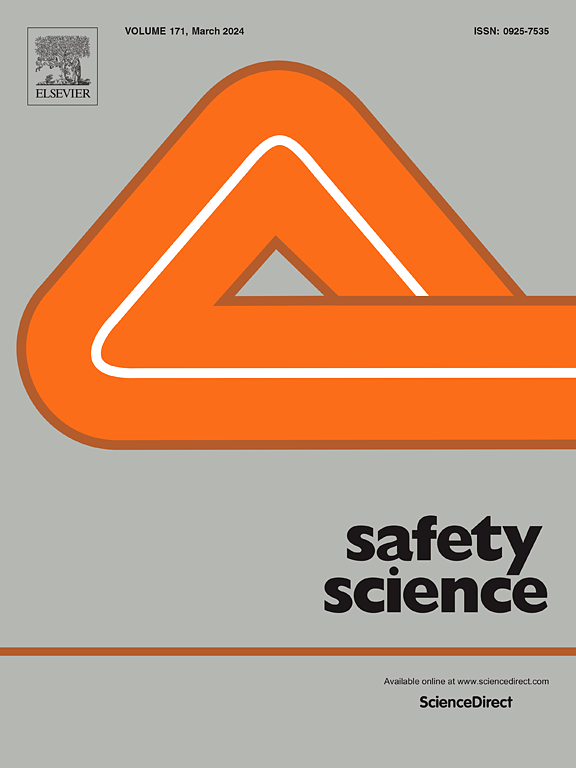识别人机交互(HRI)事件原型:事故的系统和网络分析
IF 5.4
1区 工程技术
Q1 ENGINEERING, INDUSTRIAL
引用次数: 0
摘要
由于工业机器人在生产中的显著优势,它们越来越多地应用于工作场所,导致人机交互(HRI)的安全问题受到关注。然而,现有的研究在理解机器人特性、人机错误和物理工作环境之间的关系模式方面仍然存在差距。为了解决知识差距,本文旨在识别和研究机器人特征、人机错误和物理工作环境之间关系的模式,并研究这些模式如何随着机器人设计的技术进步而演变。本文运用网络分析法对303份HRI事故报告进行了分析。基于聚类分析,确定了7种HRI事件原型,包括:(1)意外激活,(2)错误命令,(3)盲目自动化危险,(4)传感器和信号通信错误,(5)人机工程学相关伤害,(6)二次机器人入侵,以及(7)机器人辅助工作中的经典危险陷阱。时间分析显示,“原型1:意外激活”一直占据主导地位,占事故的60%以上,在未来的安全管理中值得关注。此外,在后期阶段,“原型4:传感器和信号通信错误”的频率越来越高,这凸显了对有针对性干预的需求。本文首次对人力资源调查事件原型进行了系统的识别和分类。它为研究人员和实践者提供了一个有用的框架。这些原型为系统地调查和诊断事件提供了一个结构化的工具,也可以帮助工人和管理者理解不同HRI场景中这些因素之间的关系模式。本文章由计算机程序翻译,如有差异,请以英文原文为准。
Identifying human-robot interaction (HRI) incident archetypes: a system and network analysis of accidents
Due to the significant advantages of industrial robots in production, they are increasingly used in the workplace, resulting in attention being paid to the safety issues of human-robot interaction (HRI). However, existing research still has gaps in understanding the patterns of relationships between robot characteristics, robot-human errors, and the physical working environment. To address the knowledge gaps, this paper aims to identify and examine the patterns of the relationship among robot characteristics, robot-human errors, and physical working environments and investigate how the patterns evolve along the technological advances in robotics design. This paper analyses 303 HRI accident reports by applying a network analysis. Based on the cluster analysis, seven HRI incident archetypes were identified, including (1) unexpected activation, (2) faulty commands, (3) blind automation danger, (4) sensor and signal communication errors, (5) ergonomics-related injuries, (6) secondary robot intrusion, and (7) classic hazard pitfalls in robot-assisted work. Temporal analysis reveals that ’Archetype 1: unexpected activation’ consistently dominated, accounting for over 60 % of accidents, and warrants the most attention in future safety management. Additionally, the increasing frequency of ’Archetype 4: sensor and signal communication errors’ in later stages highlights the growing need for targeted interventions“. This paper is the first to identify and categorize HRI incident archetypes systematically. It offers a useful framework for researchers and practitioners. These archetypes provide a structured tool for systematically investigating and diagnosing incidents and can also help workers and managers understand the patterns of relationships between these factors in different HRI scenarios.
求助全文
通过发布文献求助,成功后即可免费获取论文全文。
去求助
来源期刊

Safety Science
管理科学-工程:工业
CiteScore
13.00
自引率
9.80%
发文量
335
审稿时长
53 days
期刊介绍:
Safety Science is multidisciplinary. Its contributors and its audience range from social scientists to engineers. The journal covers the physics and engineering of safety; its social, policy and organizational aspects; the assessment, management and communication of risks; the effectiveness of control and management techniques for safety; standardization, legislation, inspection, insurance, costing aspects, human behavior and safety and the like. Papers addressing the interfaces between technology, people and organizations are especially welcome.
 求助内容:
求助内容: 应助结果提醒方式:
应助结果提醒方式:


